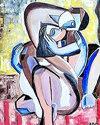内拉·拉森的去世和海伦·奥耶米的男孩,雪,鸟的双重和分离
IF 0.3
4区 社会学
0 HUMANITIES, MULTIDISCIPLINARY
ANGELAKI-JOURNAL OF THE THEORETICAL HUMANITIES
Pub Date : 2022-07-04
DOI:10.1080/0969725X.2022.2093974
引用次数: 1
摘要
摘要在本文中,我探讨了内拉·拉森(Nella Larsen,1929)的黑人现代主义作品《路过》(Passing)和海伦·奥耶米(Helen Oyeymi,2014)的当代英国黑人小说《男孩、雪、鸟》(Boy,Snow,Bird,2014)中另一个自我形象的表现。奥耶耶米声称拉森的小说是一个有影响力的隐忍。当拉森的《逝去》中的主人公艾琳出现在她的朋友克莱尔面前时,她的行为、说话和表达方式与她通常严格遵守女士礼仪的方式截然不同。事实上,她似乎是另一个人。尽管评论家们长期以来一直将克莱尔视为艾琳的另一个自我,但我认为,正是克莱尔的出现给艾琳带来了一个新的自我,一种新的人格结构。作为一个理论框架,菲利普·布罗姆伯格的主体性模型是一系列交替的自我状态——每种状态都是不同的,彼此不连续——我认为拉森通过戏剧化一个主体由于与特定的关系而将个性转变为不同的自我,赋予了19世纪文学传统的另一个自我一个新的深度另外Irene的主体性由于她在每一个手势、语气和话语中都塑造了上流社会的“女士”而变得更加复杂。(白人)“女士”的表演身份与艾琳作为中产阶级黑人妻子和母亲的社会地位的日常现实不符。关注艾琳相互竞争的自我状态的多样性,以及她对这些状态越来越失去控制,可以帮助我们理解艾琳(显然)将克莱尔从六楼窗户推出致死的模糊的最后一幕。在《男孩》、《雪》、《鸟》中,自我的转变激增。为了应对角色叙述者Boy从父亲那里遭受的无情的身体和精神虐待,Boy在与镜像的座谈会上找到了逃跑的机会。镜像与男孩是分开的(她不认为这是她自己的反映),有自己的议程,有时用自己的议程取代男孩的主观性。在小说的后面,我们了解到男孩的母亲弗朗西丝在遭受暴力强奸后,在镜子里看到了一个男性形象,并将自己转变为那个男性身份。[这部小说似乎要求读者思考受伤的身份和在彼此关系中采用另一个自我的情况。]这不是布罗姆伯格的“正常”分离,而是一种持久而严重的分离,作为对创伤的最后防御。男孩和弗朗西斯正在使用镜子替身来逃避难以忍受的现实。令她惊讶的是,当男孩生下一个非裔美国人的孩子时,对孩子在种族主义的美国的未来的强烈焦虑导致了另一种分裂:她觉得自己变成了童话《白雪公主》中邪恶的继母。她确实变得残忍、无情,并伤害了无辜的继女斯诺。在这两部小说中,对另一个自我的复杂描述反映了试图在美国种族主义社会秩序中生存的主体的心理复杂性。本文章由计算机程序翻译,如有差异,请以英文原文为准。
DOUBLINGS AND DISSOCIATION IN NELLA LARSEN’S PASSING AND HELEN OYEYEMI’S BOY, SNOW, BIRD
Abstract In this paper I explore the representations of alter ego figures in a Black Modernist work, Passing, by Nella Larsen (1929) and in a contemporary black British novel by Helen Oyeyemi, Boy, Snow, Bird (2014). Oyeyemi claims Larsen’s novel as an influential forbear. When the protagonist of Larsen’s Passing, Irene, is in the presence of her friend Clare, she acts, speaks, and expresses her feelings in a far different mode from her usual rigid conformity to ladylike propriety. She seems, indeed, to be a different person. Although critics have long seen Clare as an alter ego for Irene, I argue instead that it is Clare’s presence that brings out in Irene an alter ego, a new personality structure. Using as a theoretical framework Philip Bromberg’s model of subjectivity as a series of alternating self-states – each distinct and discontinuous with the others – I argue that Larsen is giving the nineteenth-century alter ego of literary tradition a new depth by dramatizing the way a subject changes personality to a different self as a result of a close relationship with a particular other. Irene’s subjectivity is further complicated by her enactment of upper-class “lady” in her every gesture, tone, and word. The performed identity of (white) “lady” is at odds with the everyday reality of Irene’s social position as middle-class black wife and mother. Attention to the multiplicity of Irene’s competing self-states, and her growing loss of control over them, can help us to understand the ambiguous final scene in which Irene (apparently) pushes Clare out of a sixth-floor window to her death. In Boy, Snow, Bird alter egos proliferate. To manage the relentless physical and mental abuse that the character narrator Boy endures from her father, Boy finds escape in colloquies with her mirror image. The mirror image is separate from Boy (she does not recognize it as her own reflection) and has its own agenda, sometimes replacing Boy’s subjectivity with its own. Later in the novel, we learn that Frances, Boy’s mother, after suffering a violent rape, saw in her mirror a male figure and transformed herself into that male identity. [The novel seems to ask readers to think of both instances of wounded identity and the adoption of alter egos in relationship to each other.] This is not Bromberg’s “normal” dissociation as an alternation of self-states, but a lasting and severe dissociation as a last defense against trauma. Boy and Frances are using the mirror double as an escape from unbearable reality. When, to her surprise, Boy gives birth to an African American baby, the intense anxiety about her child’s future in the racist United States causes a different kind of splitting: she feels herself transforming into the wicked stepmother of the fairy tale “Snow White.” She indeed becomes cruel, unfeeling, and damaging to her innocent stepdaughter Snow. In both novels, the complex depiction of alter egos reflects the psychic complications of subjects trying to survive in the racist social order of the United States.
求助全文
通过发布文献求助,成功后即可免费获取论文全文。
去求助
来源期刊

ANGELAKI-JOURNAL OF THE THEORETICAL HUMANITIES
HUMANITIES, MULTIDISCIPLINARY-
CiteScore
0.60
自引率
33.30%
发文量
57
期刊介绍:
Angelaki: journal of the theoretical humanities was established in September 1993 to provide an international forum for vanguard work in the theoretical humanities. In itself a contentious category, "theoretical humanities" represents the productive nexus of work in the disciplinary fields of literary criticism and theory, philosophy, and cultural studies. The journal is dedicated to the refreshing of intellectual coordinates, and to the challenging and vivifying process of re-thinking. Angelaki: journal of the theoretical humanities encourages a critical engagement with theory in terms of disciplinary development and intellectual and political usefulness, the inquiry into and articulation of culture.
 求助内容:
求助内容: 应助结果提醒方式:
应助结果提醒方式:


